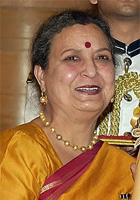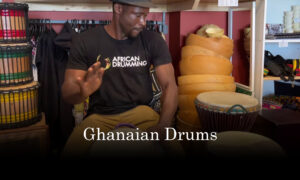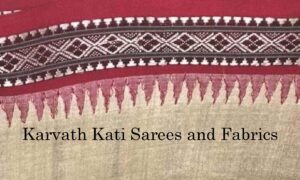Introduction
In the picturesque hills of Himachal Pradesh, India, lies a craft that is as intricate and a part of daily lives of the people as it is rich in cultural heritage – the Chamba Rumal. This exquisite form of embroidery has been practiced for centuries in this region and has captivated art enthusiasts and historians alike with its superior story telling, designs and rich history. In this blog, we get to know about the historical and cultural significance of Chamba Rumal, explore the meticulous process of its making, discuss popular brand names associated with it, and highlight its modern relevance and contemporary usage.
Historical and Cultural Significance
The origins of Chamba Rumal can be traced back to the 17th century during the reign of Raja Umed Singh (1748–1764) in the princely state of Chamba. It is said that the raja was so captivated by the artistry of Persian embroidery that he invited skilled artisans from Multan to teach the craft to the women of Chamba. Thus, began the tradition of Chamba Rumal, which flourished under royal patronage.
Chamba Rumal served multiple purposes in the local culture. Initially, it was used as ceremonial coverings for gifts presented to deities in temples and as dowry items. Over time, it evolved into a form of storytelling, with intricate motifs depicting scenes from Hindu mythology, folk tales, and everyday life.
The Victoria and Albert Museum in London houses a rumal that was presented to the British in 1883 by Raja Gopal Singh. It features an embroidered depiction of the Kurukshetra War from the epic Mahabharata.
Process of making a Chamba Rumal
The process of creating a Chamba Rumal is a laborious one, requiring precision, patience, and skill. It typically starts with hand-spun cotton or silk fabric, which is then dyed using natural colors derived from plants and minerals. The design is traced onto the fabric using charcoal or pencil before the embroidery begins.
The embroidery itself is done using a technique called dorukha, where the motifs are embroidered on both sides of the fabric, making the design reversible. The stitches used include the satin stitch, chain stitch, and herringbone stitch, among others. The motifs range from floral patterns and animals to human figures and geometric shapes, each symbolizing different aspects of life and culture.
In the present times Chamba Rumal is often called as a “needle marvel,” and is crafted in square and rectangular forms. The materials utilized remain the same, including muslin, malmal, khaddar (a rough-textured fabric), fine charcoal or brushes, and silk threads devoid of knots. Often applying the double satin stitch technique for embroidering both sides of the fabric that are simultaneously stitched using a forward and backward method to ensure uniformity on both sides of the rumal. Upon completion of the embroidery, the fabric is bordered with approximately 2 to 4 inches on all edges.
The raw materials for Chamba Rumal were traditionally sourced locally. Cotton and silk were cultivated in the fertile valleys of Himachal Pradesh, while natural dyes were extracted from plants like indigo, madder, and pomegranate. Skilled artisans would then process these materials using age-old techniques passed down through generations.
In recent years, however, the availability of traditional raw materials has dwindled, leading to the use of commercially produced fabrics and synthetic dyes. While this has made the process more accessible, it has also raised concerns about the authenticity and sustainability of Chamba Rumal.
Revival of Chamba Rumal
In the late 1970s, efforts were made to revitalize this artistic tradition. Usha Bhagat, a close associate of the late Indira Gandhi, started an initiative through the Design & Development Centre and worked to find original works of Chamb Rumal from museums and private collections across the country. Following this with a rigorous effort where women artists were trained in this languishing craft, resulted in the recreation of a new design library and it was also a major effort in the step of upgrading the quality of this craft.

Another major name in this context is that of Padma Shri Lalita Vakil, who was recognised and awarded with the Nari Shakti Puraskar award for her contributions to reviving this art form by organizing training courses all over the country. Because of the efforts made by all these leaders of change, several brands have emerged over the years, specializing in the production and promotion of Chamba Rumal.
One such brand is Himachal Handloom and Handicrafts Corporation, established in 1974 by the Government of Himachal Pradesh to support local artisans and preserve traditional crafts. Another notable name is Chamba Rumal Revival Society, a non-profit organization dedicated to reviving and promoting the art of Chamba Rumal through workshops, exhibitions, and marketing initiatives.
Chamba Rumal has found new life in the world of fashion and interior design, with designers incorporating its motifs into clothing, home furnishings, and accessories. Its timeless appeal and intricate craftsmanship make it a coveted item among collectors and enthusiasts alike.
Geographical Indicator status
With great efforts by the people and the government of the state of Himachal Pradesh, Chamba Rumal has been registered for protection under the Geographical indication of the Trade Related Intellectual Property Rights (TRIPS) agreement. On 22 January 2007, it was listed as “Chamba Rumal” under the GI Act 1999 of the Government of India.
Conclusion
In conclusion, the beautiful heritage of Chamba Rumal from Himachal Pradesh is the one which stands as a confirmation of the cultural significance of this artform. Coupled with its timeless beauty, the craft of Chamba Rumal has remained a part of the daily lives of the people of Himachal and with the efforts of the people it is cherished and celebrated by people from all over the world.
With the acquiring of the GI status and similar efforts, as we see towards the future, it is essential to keep making efforts to preserve and promote this cultural art form. Chamba Rumal is not only a piece of India’s craft heritage, but it has and will continue to be as a source of inspiration and admiration for the lovers of crafts across the world.




























